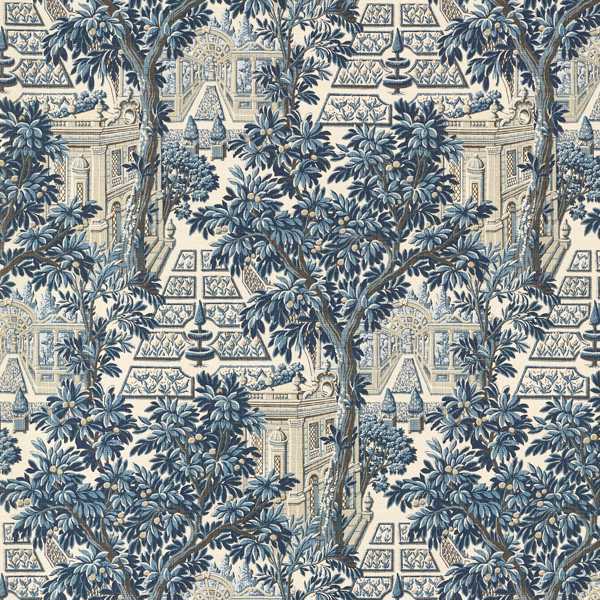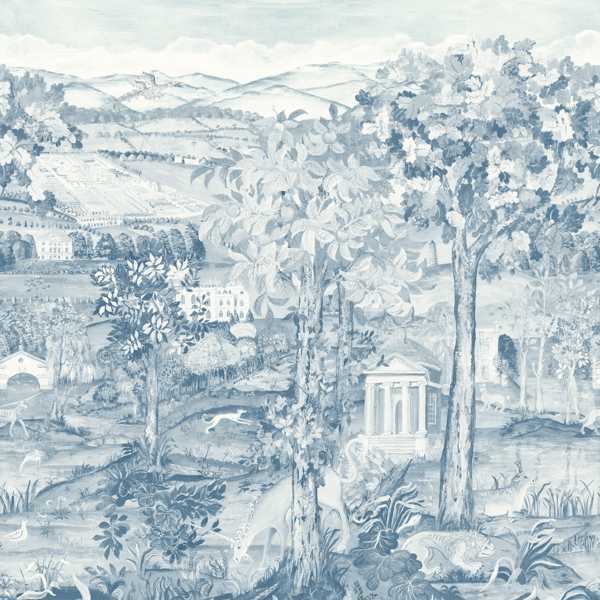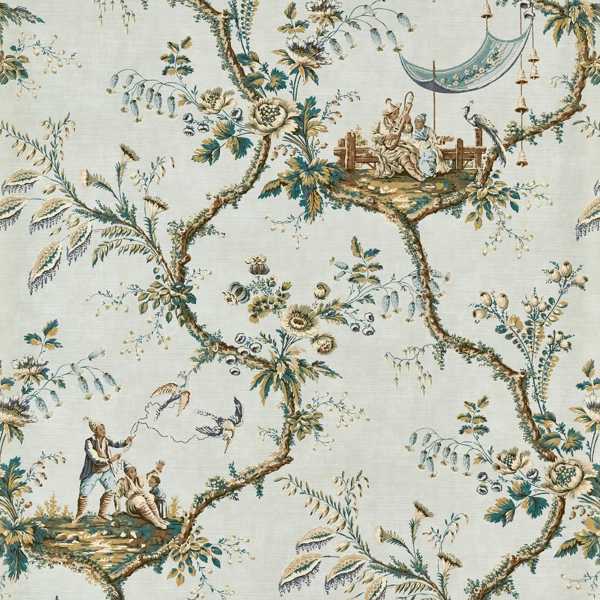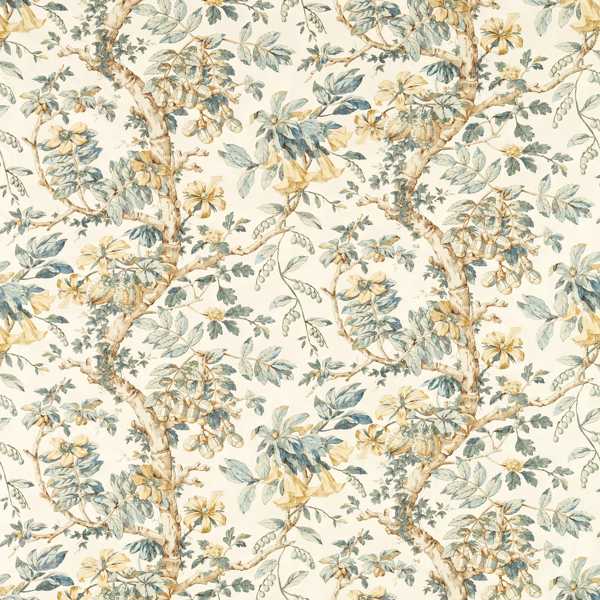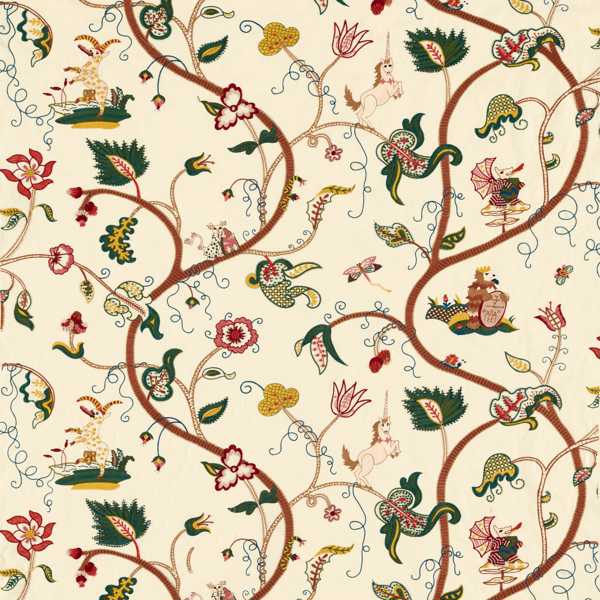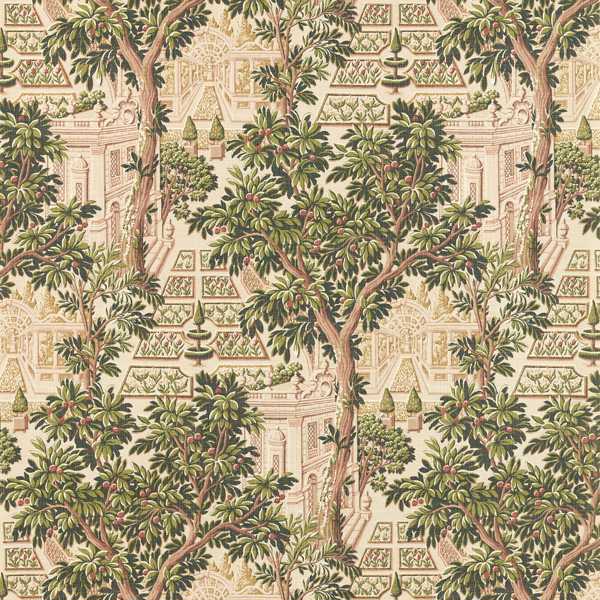- close
-
-
Collectionsarrow_drop_down
- All Collections
- Indienne
- Endpapers Wallcoverings
- Rare Textiles
- Domino Velvets
- Luxury Plains
- Moiré Wallcoverings
- Suffolk Damasks & Stripes
- Arcadian Thames Wallpapers
- Arcadian Thames Fabrics
- Arcadian Weaves
- Luxury Coordinates
- Cotswolds Manor Wallpapers
- Cotswolds Manor Fabrics
- Kensington Walk Wallpapers
- Kensington Walk Fabrics
-
Collectionsarrow_drop_down
Tales of an exhibition | Behind the screen
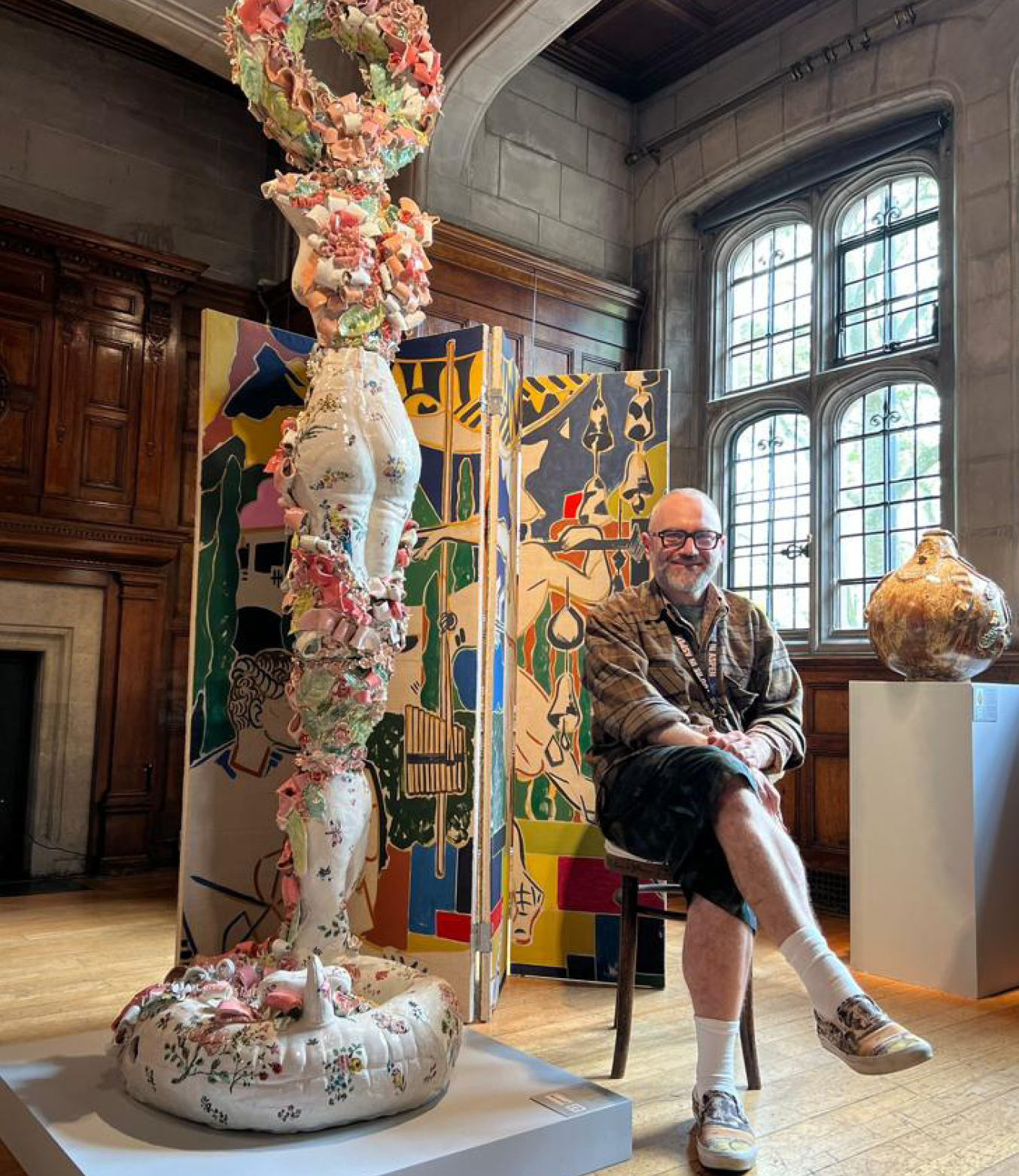
Eye of the Collector has closed its doors for 2023 but our work with cross-discipline artist Giles Round lives on as we go behind the screen
Eye of the Collector, the London art fair and digital platform for global collectors was a truly remarkable event, bringing art to the fore at Two Temple Place. Zoffany’s part in the curator’s trail left its mark on patrons with the expert eye of curator, Sigrid Kirk, and a merging of creative talents. This was a showcase of collaboration at its best, with Zoffany revealing a plethora of work from various artists.
It was Giles Round, the cross-discipline artist, known for his exhibition scaled work, who delivered an exceptional centrepiece, a specially commissioned screen for Zoffany, which came together for the event in collaboration with our Lead Designer, Peter Gomez.
We were honoured to have Giles’s artistic eye and hand involved with this bespoke piece. The screen came to life through Giles’s interpretation of documents sourced from the Zoffany archive, with reference to Emperor’s Musician, which moves in a beautifully modern narrative across the front of the screen. On the reverse, the exquisite Italian Garden, Pina De Indes, and Tudor Damask wrap the panels.
The dramatic folding screen created a space within a space and an enticing glimpse into Zoffany’s Arcadian Thames collection. During the art fair, the beautiful and functional screen was sold to a private collector with proceeds being donated to QEST (The Queen Elizabeth Scholarship Trust). Art lives on – a future masterpiece of our time.
Following the event, Sigrid Kirk, Peter Gomez and Giles Round sat down to reflect on the power of the English landscape and how Arcadian Thames came into focus, including how and why Giles created this inspired screen.
A conversation behind the screen
In a small timber studio, a construct inspired by Walter Segel’s method of self-building using timber framed construction, the designers reflected on their work together and the references that they pull from their surroundings. Of his studio, Giles commented, “It’s quite a good example of what interests me. I work between art, design and architecture and make specific references to both, usually 20th century art history, but sometimes further back and often from the design world – objects, textiles, interiors, and architecture.”
Peter concurred that his own surroundings played a big part of the foundations and inspirations of Arcadian Thames, having become a regular cyclist along its riverside, “[Arcadian Thames the collection] was built from a combination of different influences from the mystical, magical unicorns of Hampton Court Palace to the garden design along the river and the architecture.”
Regarding the collection, Sigrid said, “There is a real sense of time compressing and expanding with different imagery and ideas next to each other in the architecture and decorations. From the gods and shepherds of ancient Arcadia to the mystical animals of Hampton Court, pineapples of Ham House to Alexander Popes grotto - much of the collection and the collaboration seems to be about how you put old things next to new things, and how ideas stick.”
“My starting point was the collection itself. One textile I was attracted to immediately is called the ‘Emperor's Musician’ and part of that you can see I’ve represented in the screen – the canopy and hanging bells and other parts of the imagery are drawn from the more mythical part of the idea of Arcadia. So, you see gods, which are half animal, half sort of human appearing, but next to and mixed with this later civilising idea of the Arcadian Thames, and then incorporated into this I brought architecture in. There are lots of different references, but the overall composition is based on an idea of trying to depict Pan teaching Daphnis to play the pipes and at this point, you can see they’re in between lessons. Daphnis is dancing. The figure is based on a drawing of Vaslav Nijinsky by Valentine Gross for the Leon Bakst scenic design for Chloe et Daphnis, a Ravel ballet made for the Ballet Russe” Giles responded.
Movement was key to the narrative of the screen and Giles’s design, which Sigrid and Peter agreed is a characteristic of so many Zoffany fabrics, “with all our fabrics, there is that sense of movement but also that they are repetitive designs, so you get that sort of modular feeling.”
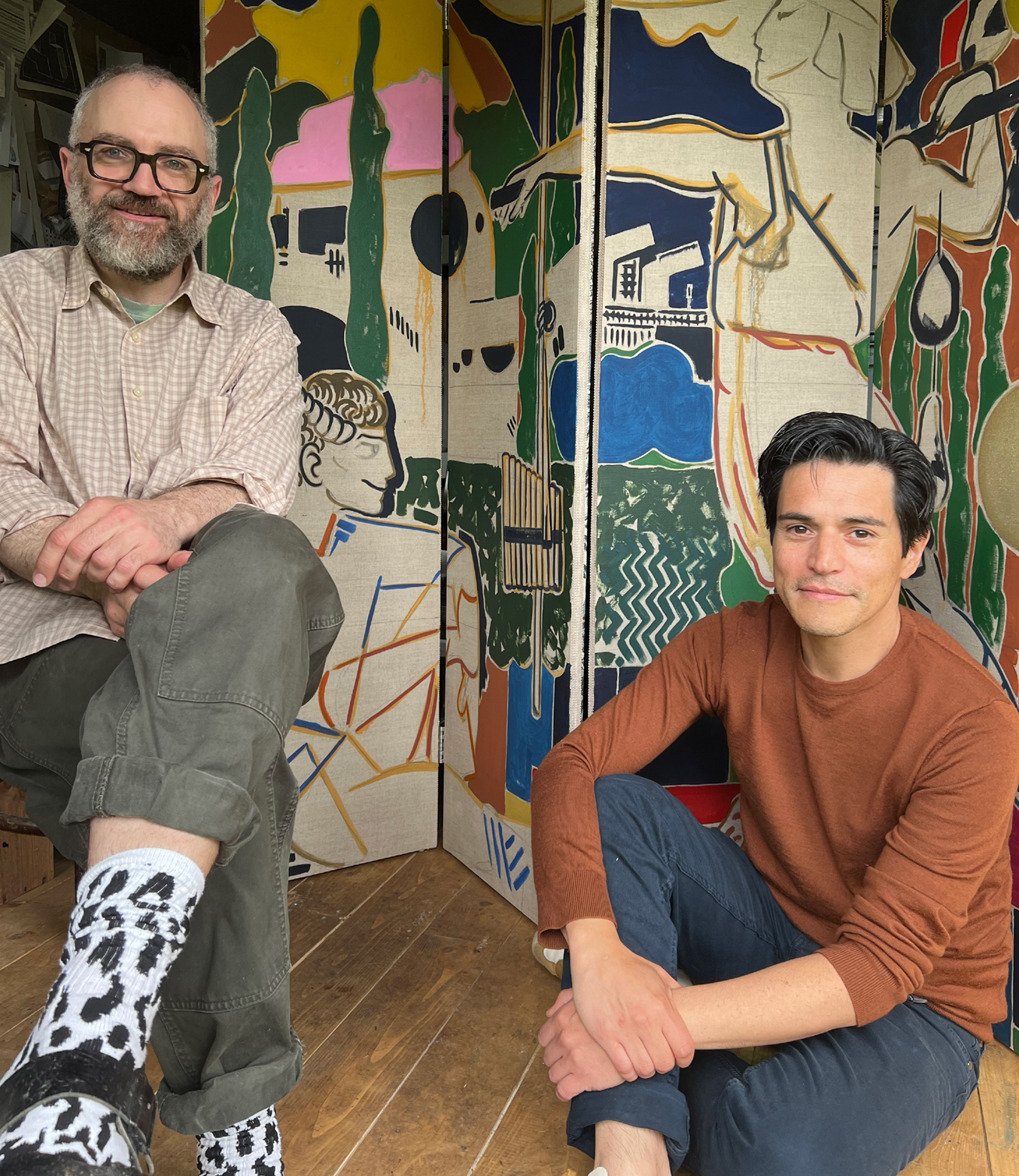
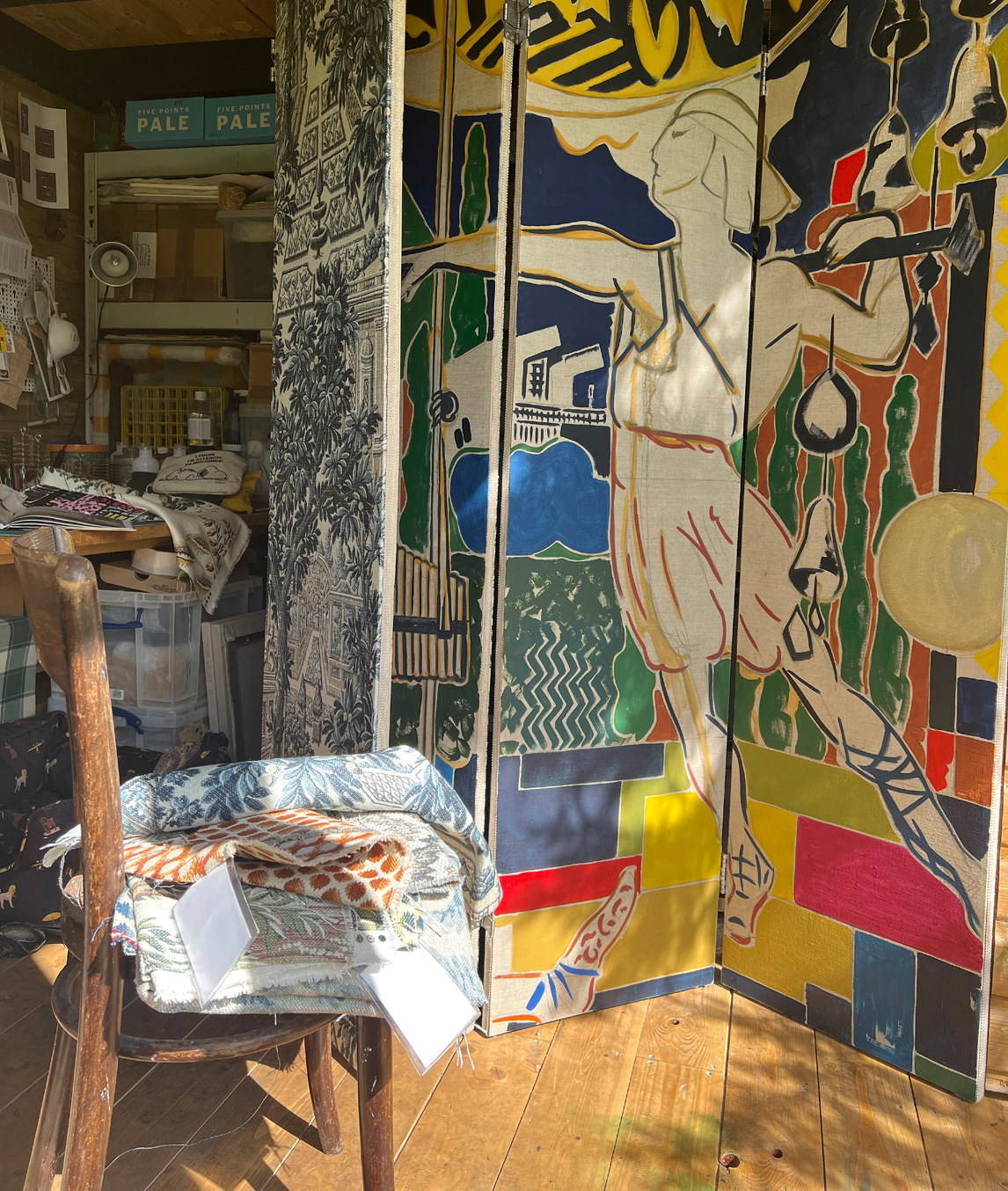
THE ARTISTRY
Giles’s depiction of Pan was inspired, in part, by the artist John Craxton, “I chose to depict Pan resting but his pipes are in front of him… The artist John Craxton, who lived in Crete… was quite famous for his depictions of the Cretans. He was a self-described “kind of Arcadian’ in fact… the leg is something between a trouser and a sort of hoofed animal.”
Taking in this screen and Giles’s artistry you see more reveal before your eyes the longer you look upon it. Peter notes the bells and the canopy, which Giles painted with a reminder of Arcosanti, a utopian/futuristic eco-town built in the Arizona desert. Take a deeper dive into this extraordinary piece, part furniture, part art, and you will see references and frames of visuals that sing with the power of this collaboration.
Conversations between Giles and Peter were layered with leafing through fabrics from Arcadian Thames, which became a powerful driver in this piece of work. From the famous Wren Pineapples from Ham House to the Poplar Trees, which surface in many a Zoffany image, building up layers of history, of architecture and of contemporary art, was how this masterpiece was born. Collaboration at its best is an open and free flowing dialogue of extraordinary creativity, as we seek to create masterpieces of the future in a blend of global artistry and our illustrious archive of designs.
The screen, for all its power and drama, is at its heart a piece of furniture, destined for a home. Peter said, “I think what's been so interesting in working with Giles is that he knows interiors and furniture, and that idea of the collected home.”
Giles concludes, “I've been fascinated with interiors since I was a child. My parents' house was quite patterned, there was patterned wallpaper, patterned fabric, patterned carpet and I distinctly remember the wallpaper on the stairs that looked like marbling, and it was just like in blue-on-blue tone. It was like this totally psychedelic swell… I think you stay fascinated with the things that you grew up with and were around you.”
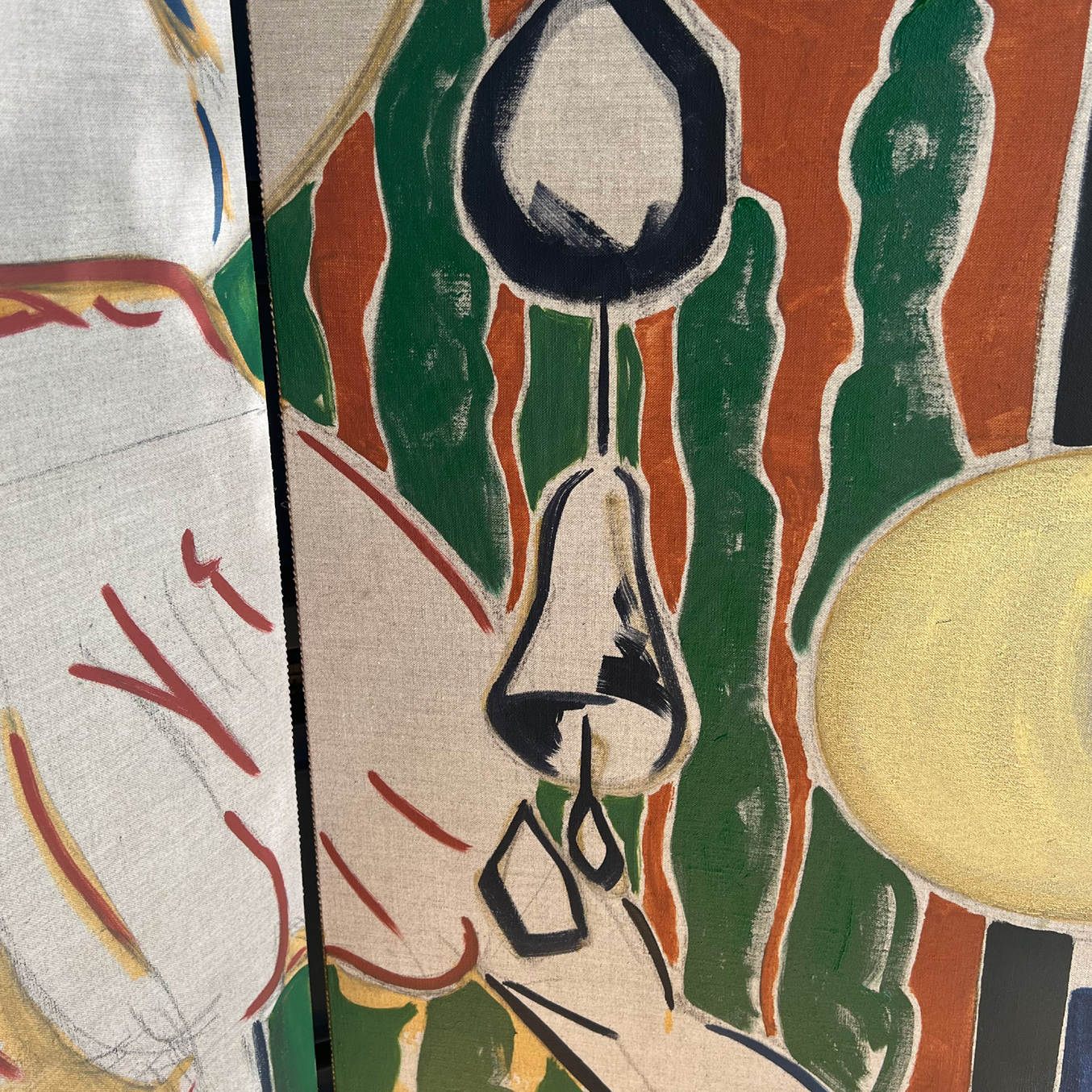
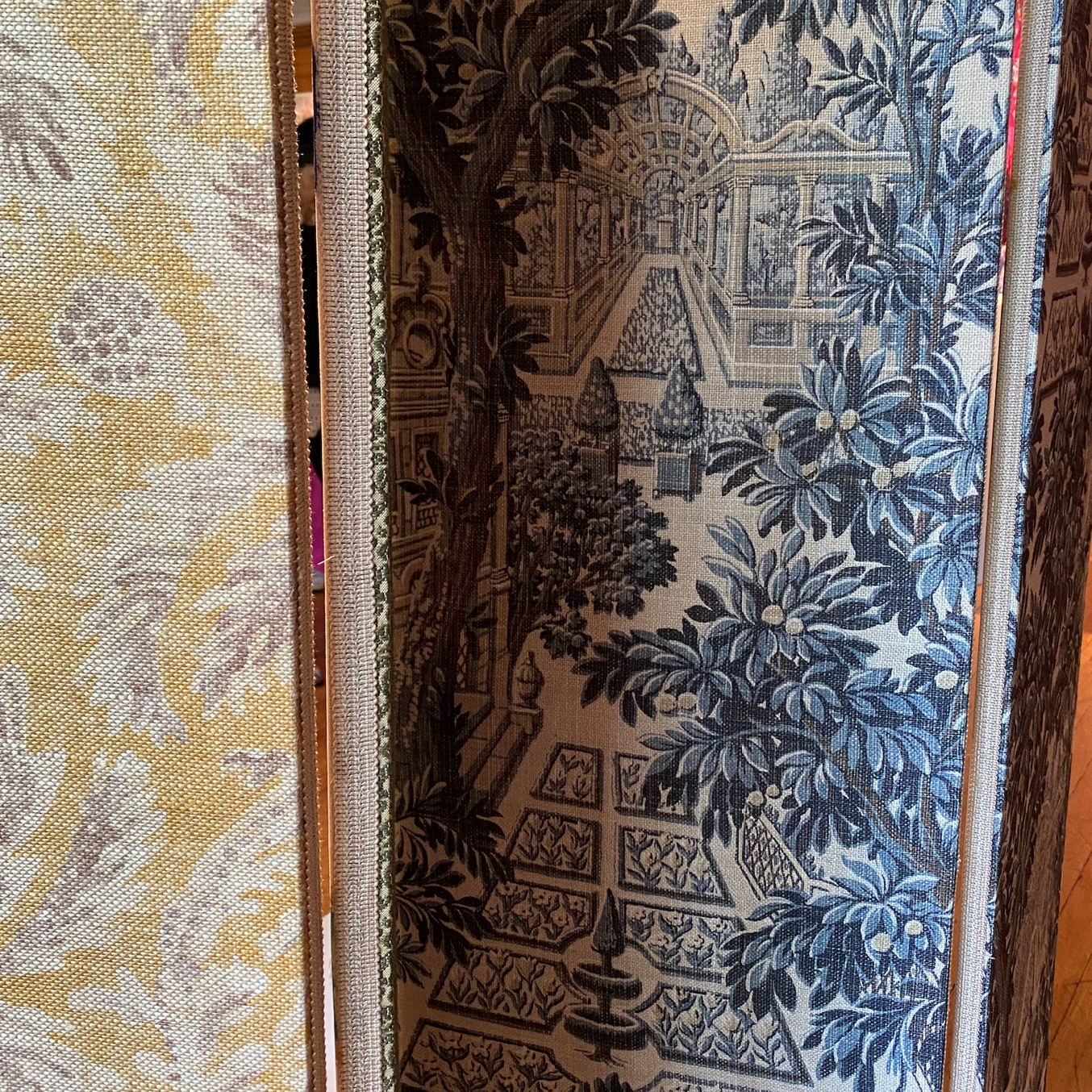
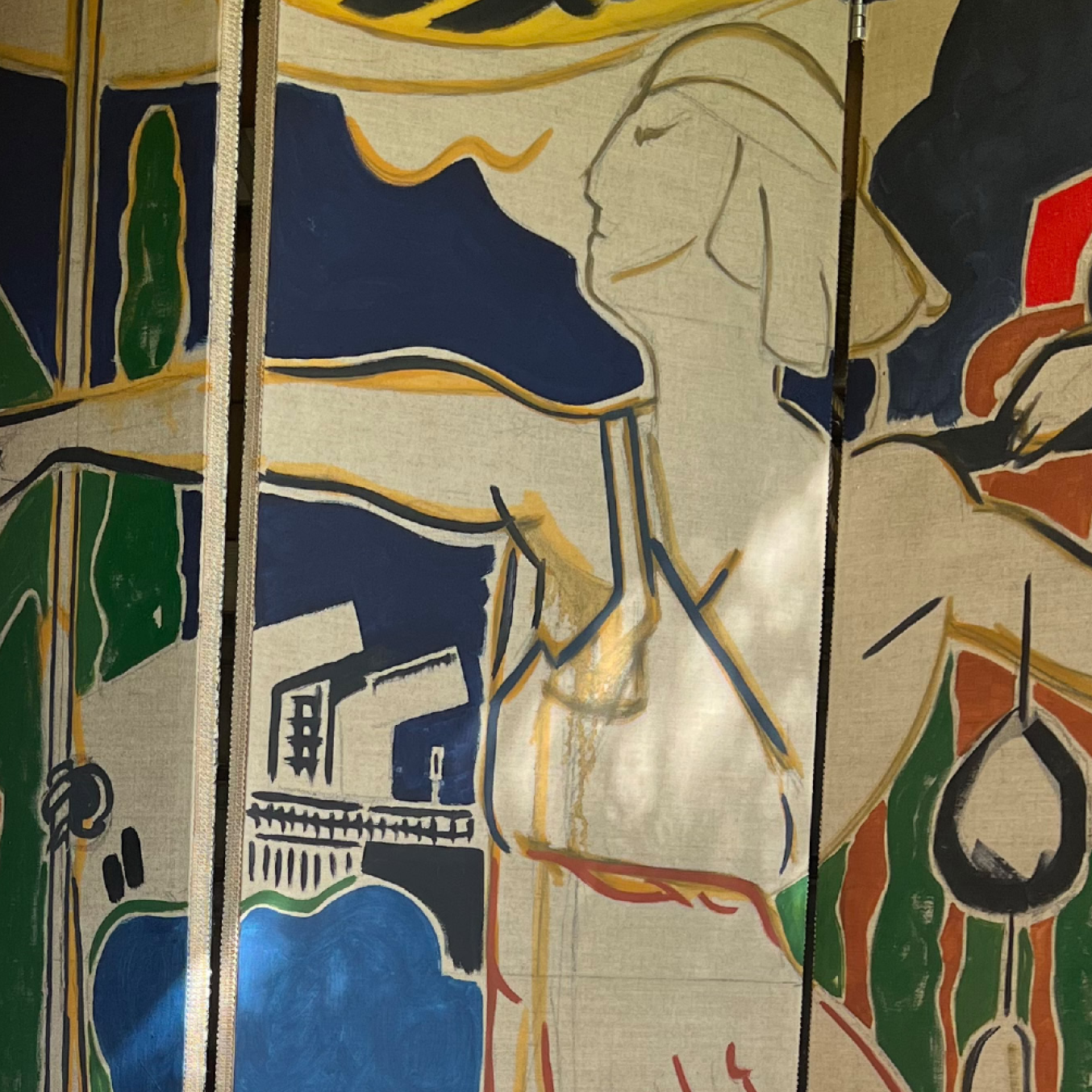
DISCOVER THE ARCADIAN THAMES COLLECTION
posted on 09 Jun 2023 in Interiors
